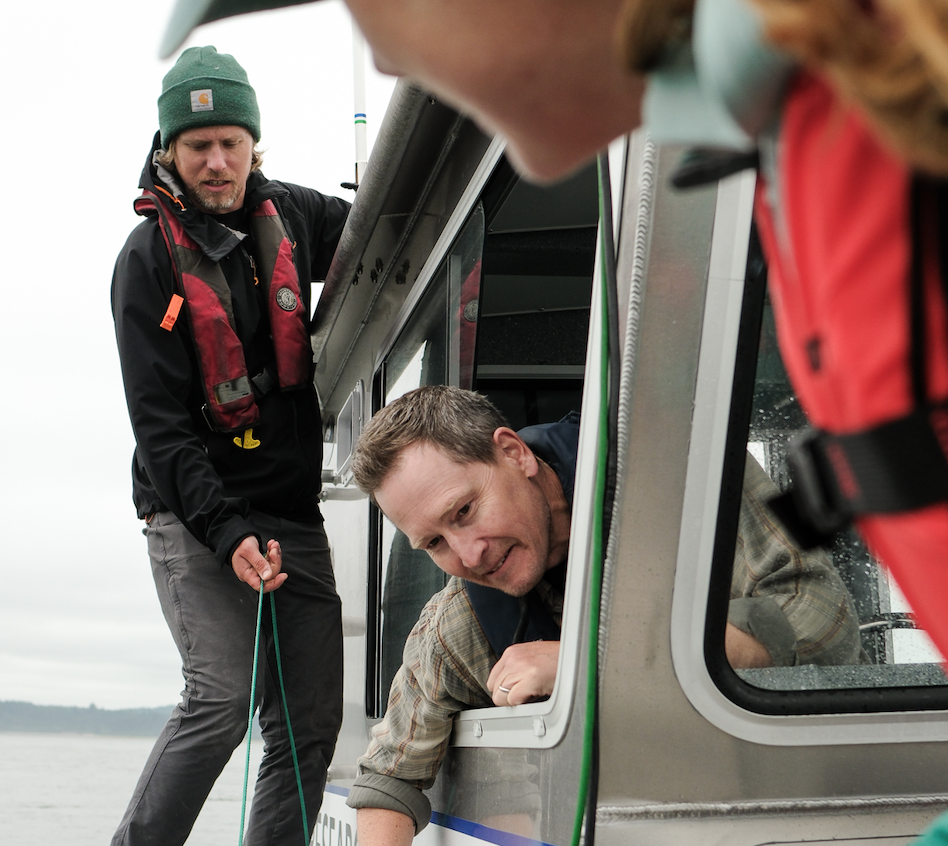Calling all fin clippers: With a record 5 million Chinook to mark, Naselle Hatchery is buzzing
Published 12:19 pm Monday, April 11, 2022

- _MG_5242-2.jpg
NASELLE — It’s a simple snip that happens in seconds, a distinguishing mark that lasts a lifetime for salmon providing crucial insight for fishery management across the Pacific Northwest.
Trending
Fin clippers wanted
In Washington a constellation of more than 100 state, federal and tribal facilities comprise to raise more than 200 million juvenile fish each year, according to the Washington Department of Fish and Wildlife. The Naselle Hatchery is among four state facilities in Pacific County, including Forks Creek, Nemah and Grays River.
The Naselle Hatchery, well regarded for their prolific coho production, has also ramped up Chinook from 800,000 to more than four million over the past couple of years. In addition to Chinook, the hatchery raises around 1.4 million coho, 500,000 chum and 75,000 steelhead at their facility at 270 North Valley Road.
The rapid rise in hatchery production, particularly Chinook, has also meant an increased need for staffing — particularly the seasonal work that involves fin clipping.
The hatchery is currently in the midst of raising a record five million Chinook salmon for release this year — partly in order to provide more food stock for endangered Southern Resident Killer Whales, the Puget Sound-based orcas that also frequent the mouth of the Columbia.
“We have everything but adults right now,” said Naselle Fish Hatchery Specialist III Brady Foreman last week.
“We have the juveniles that just came out this year, and then the fish that are going to be released this year (last year’s juveniles) still here,” he said. “We have multiple-year classes of the same species and stock. It’s a maximum load right now. And we’re clipping. We’ve got 16 clippers here today clipping fins.”
Fin clipping, or the removal of the adipose fin, has been a regulatory practice for hatchery-raised salmon in Washington since the 1990s, primarily to monitor and research hatchery salmon and visibly distinguish them from wild fish.
“We fit up to 12 people in each [mobile trailer]. They have a tiny pair of scissors to cut the adipose fin off the fish before sending them down into the pond. It’s a chance to get a good count on them as well, each fish goes through an electronic counter,” Foreman explained. “It’s a big time of year for us. We’re clipping and releasing, everything is churning hard.”
The fin-clipping crew works daily, Monday through Friday, beginning in March and continuing until they reach their goal of five million Chinook.
“They’re here 7:30 a.m. until 3 p.m. five days a week until probably June at this rate. We’re having a hard time staffing the trailers. It’s a big deal all over the state — everyone is having a hard time getting help.”
The clippers are contracted through an independent service, with no experience necessary. But this year it’s been harder than usual to fill all the fin-clipping spots, which has essentially doubled at the hatchery with the record salmon stock.
“Kelly Services supplies us with the clippers. They’re just having a hard time getting enough clippers for all the hatcheries throughout the state. We have a lot of fish to handle, so we’re always looking for more clippers. It pays $16.50, which isn’t a bad wage,” Foreman said.
“We typically would have one trailer with 12 people, but now we’ve doubled our production basically, so we’re looking to fill two trailers with 12 people. We want 24 clippers for each day and we’re right around 16 right now.”
Early in clipping season
The clipping began in late March and will likely continue until June.
“This is our third week of doing it. We try to get it started as soon as possible but the fish have to be a certain size, so they can see the fin to cut it. We’re racing to get the fish big enough to get the clipping started, then we have to get all the clipping done before the fish are ready to go into the ocean,” Foreman said.
“The Chinook are only here a few months, they don’t spend a whole summer here. They’re sub-yearling, so they come out here in January and will be gone by the end of June. You have a narrow window on the Chinook, basically from the end of March until June to get them all clipped — and we have five million now, so it’s a lot of scissor clips. We need as many people as we can get out here.”
So far, crews have clipped approximately 20% of the Chinook.
“We’re coming up on our first million. We should reach it tomorrow or the next day. We have four million more to clip before June,” Foreman said.









